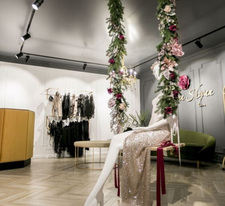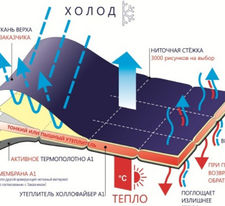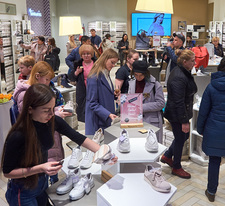Who is he – the perfect salesman?
part 1part 2
The personnel holding "ANCHOR" has been working in the field of fashion for over ten years and has a holistic view of the situation in this market segment. The company's specialists see the market from both employers and applicants. Ekaterina Petrova, Head of the recruitment consultants group "ANCHOR Business Solutions", talks about the specifics of working in various segments of the fashion industry.

The Russian fashion industry is structured and quite clearly segmented. There are five main segments: luxury, premium, above average, medium and below average. Each of them has its own specifics.
- Luxury (luxe) – designer clothing, which can be either haute couture (haute couture) or pret-a-porter (pret-a-porter). Haute couture clothes are sewn in a fashion house in a single copy, often by the standards of a specific customer. Pret-a-porter, being an expensive designer clothing, is made to standard sizes and does not imply a single execution.
Well-known designers produce models of the first and second line, as well as often the third line, which stands out as an individual brand with its own name and logo. As a rule, such brands gain no less popularity than their "parent" brand. It is these sub-brands that belong to the premium segment (premium) or the above-average segment (middle-up). The middle-up segment is a transition between premium and more democratic brands, combining high quality clothing and more affordable prices.
- The middle segment is characterized by high quality of fabric and tailoring and differs from the above-mentioned segments by the mass distribution of models.
The below-average segment (mass-market) is characterized by mass distribution, the clothes here are of lower quality, but modern and "trending".
Despite the fact that there are five main segments in the structure of the fashion market, when working with staff, two conditional groups of employers are distinguished: companies that have service and personal sales in their work, and companies that focus on merchandising and conversion (the ratio of the number of buyers and visitors). The first group includes firms representing the luxury, premium and above-average segments, and the second group includes companies in the middle and below-average segments.
For employers of the first group, it is very important that the candidate has experience working with a customer database, successfully copes with personal sales and is able to find an individual approach to each client. It makes no sense to deny that for such companies the external data of the candidate is important, special attention is paid to his personal qualities: charisma, the ability to charm the interlocutor, because it is to such sellers that customers turn again and again. Employers from the first group, as a rule, categorically refuse to consider specialists who previously worked in the mass-market segment as candidates. This is due to the fact that they are not ready to spend time training such employees, believing that key skills are instilled from the basics, and it is almost impossible to retrain salespeople. At the same time, with regard to specialists with experience in the middle segment, some companies of the first group are not so categorical. They value in such employees a much higher focus on working with the customer than in the mass-market segment, and are ready to invest in their training if they have the required personal qualities.
It is curious that employers in the mass-market segment are also not ready to consider as candidates those who previously worked in the luxury or premium segments. These specialists are accustomed to a calm pace of work, when they have the opportunity to devote a sufficient amount of time to each client (servicing one customer in these segments can last several hours), and the traffic in the hall averages one visitor per hour. In mass-market stores, on the contrary, there is a very high passability and, accordingly, the dynamics of work. Employees of this segment should be very efficient, be able to interact effectively with other team members and constantly work in multitasking mode.
To be continued.
Author:Ekaterina Petrova,
< span style="max-height: 1e+06px; font-size: 14px;"> Head of the Recruitment Consultants Group «ANCHOR Business Solutions» (HR Holding «ANCHOR»)
Photo: Shutterstock.com











